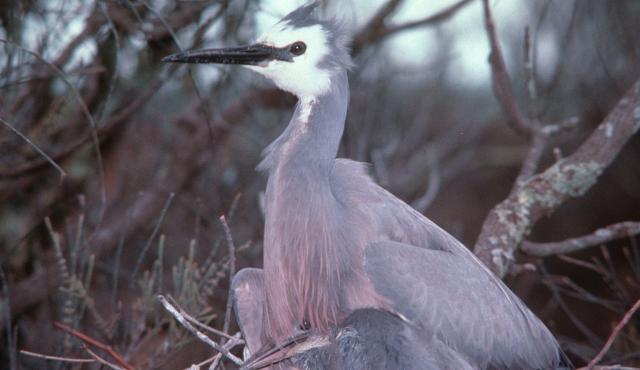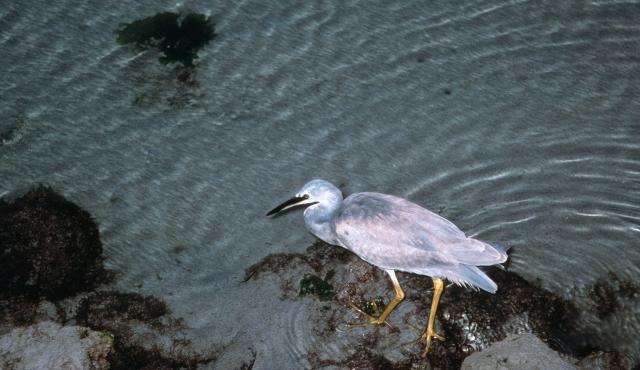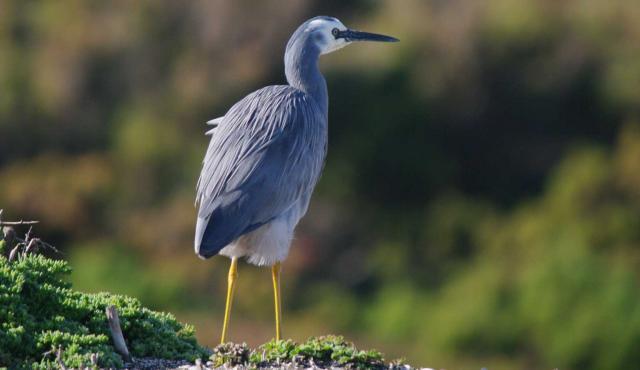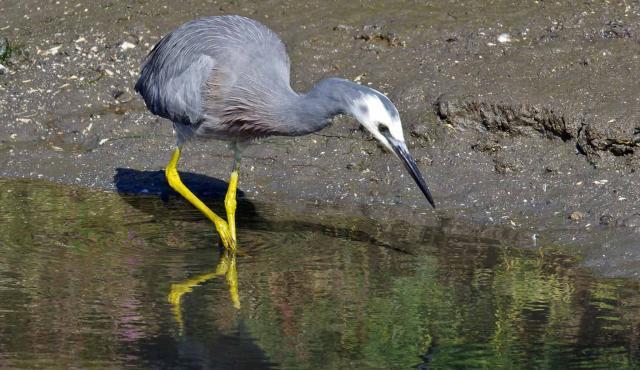




White-faced Heron
Egretta novaehollandiae
| Details | |
|---|---|
| Type | Bird |
| Group | |
| Biology | Breeding season mainly October to December. May breed outside this season in response to rainfall. Both sexes share incubation of eggs and care of young. Builds nest in tall trees. Female lays 3 to 5 pale blue eggs. Incubation period 21-24 days. Young fly 40-45 days. Normally nomadic. |
| Distinctive Markings | Rufous grey plumes on lower neck and upper breast with a characteristic white face. |
| Taxonomy | |
|---|---|
| Phylum | Chordata |
| Class | Aves |
| Order | Ciconiiformes |
| Family | Ardeidae |
| Genus | Egretta |
| Species | novaehollandiae |
Found throughout mainland Australia and Tasmania, as well as many coastal islands. Also found in New Guinea, New Caledonia and New Zealand.
Source: Atlas of Living Australia